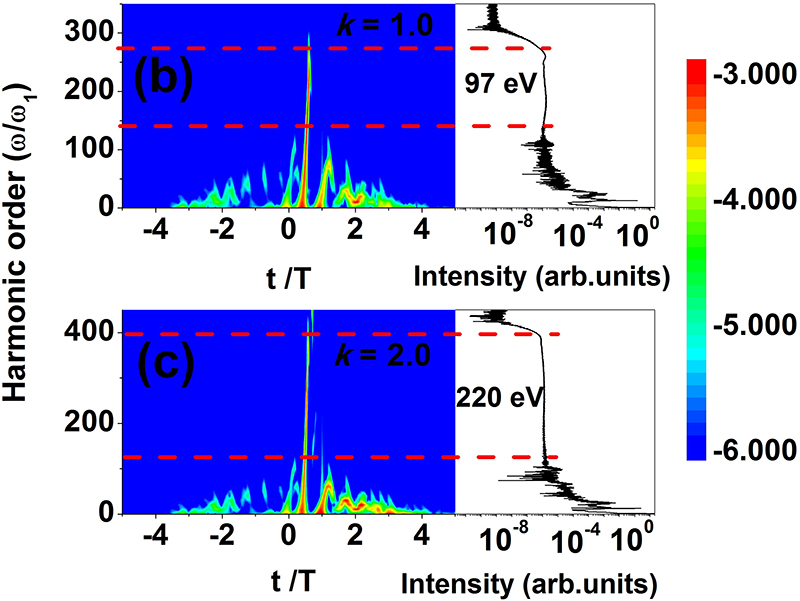EPJ D Highlight - Attosecond pulse leads to highest molecular level probe resolution
- Details
- Published on 01 October 2018

A team of Chinese physicists has published a study explaining how to turn low-intensity infra-red beams into high-intensity X-ray beams, opening the door to ultra-fast pulsed energy sources for ultra-high time resolution probes
Attosecond pulses enable physicists to probe dynamic processes in matter with unprecedented time resolution. This means such technology can provide better insights into the dynamics of electrons in molecules. Devising a source of ultra-fast X-ray pulsating in the attosecond range is no mean feat. Comparing an attosecond is to a second is the equivalent of comparing a second to about 31.71 billion years. Now, a team of physicists from China has exploited an optical phenomenon, opening the door to creating high-order oscillations in existing light sources. This makes it possible to shift the frequency of the original source into X-rays with a laser beam source pulsating in an ultra-fast manner, to reach the attosecond range. The trouble is that yield of such higher order oscillations decreases as the source laser wavelength increases. In a new study published in EPJ D, Liqiang Feng and Yi Li from Liaoning University of Technology, Jinzhou, China, have developed a method to select, enhance and extend the higher order emission peak from a laser beam changing from ultraviolet to a mid-infrared.
Ensuring that the oscillation created is of suitable intensity and duration in the attosecond scale is tricky. In this study, the authors examine various ways of enhancing the efficiency of producing such higher order oscillations by coaxing the oscillations into a single peak instead of multiple peaks.
To achieve this objective, they eliminate the sensitivity of the detector to the laser pulse duration and the delay time between pulses by opting for a technology based on a polarisation gate, which involves comparing the arrival time difference of the two polarised pulses from two mid-infrared polarisation fields once they have crossed the polarisation gate.
The authors then show that by adding an additional pulse, the higher order oscillation can be extended to the X-ray region.
L. Feng, Y. Li (2018), High-intensity Isolated Attosecond X-Ray Pulse Generation by Using Low-Intensity Ultraviolet-Mid-Infrared Laser Beam, European Physical Journal D, DOI: 10.1140/epjd/e2018-90268-6





